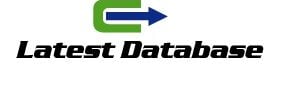You know that Google takes into account a series of factors when positioning a website. But do you know which ones you should focus on to create a perfect SEO page ? Or better yet, do you know how you should structure your website to be perfectly optimized ? These are very common questions in the field of SEO, and for which you will have. How to create already seen thousands of answers on the Internet… I do not believe that there is a single absolute correct way to optimize a web page. But I do believe that I can share important information about the most relevant points when structuring a web page, in order to direct the content and increase.
The probability that your
Have a better chance of appearing in the top positions in search engines (Google, Bing, etc.) Manage to increase traffic on social networks such as Twitter, Facebook, Google+, LinkedIn or Pinterest. Improve the perception of the brand, increase the trust of your followers. And as a final result, convert that good perception and trust into visits to company data the website. As I have told you before, Google takes into account a series of factors (don’t miss this fantastic list with 200 factors!) when positioning a website. Since I believe that it is almost impossible for us to be able to take all of them into account, in this article. I am going to talk to you about some that for me are essential, such as keywords, URLs, the title. ALT tags, images, loading speed, links or social channels, among others, when you want to optimize a web page.
How to create So if you are looking for some
Strategies to improve the SEO of your websites, this article can be very useful for you. I also include an infographic where I summarize the highlights of each factor. In a simple BTOC Database and very visual way. It is important that in the first 100-150 words of the article you mention the keyword. Because this way you emphasize that the content of your post is about that keyword. It is also necessary that you use related keywords in fields such as the title and description. As they help Google understand the relevance of a keyword. For example, you can use similar words, synonyms, within the same semantic context, etc.
It is convenient to include both internal and external links that complement or add quality to the content. Internal links will allow you to boost the web positioning of other content on your page and help reduce the abandonment rate on the web. We should use internal links ( to our own content) at the beginning of our article, as this is when it is most difficult for us to retain the user. Therefore, if they find links in which they may be interested, the time spent on your website will possibly increase.







